The Gemstones
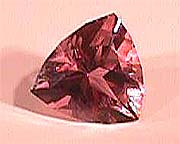
Zandrite
What is it?: This is a type of synthetic glass that was developed by a major glass manufacturer. One of the developing scientists realized that there was a gemstone marketing application possible and started the ball rolling to create a new synethic gemstone sensation. Based on the reaction from the TV shopping channels and others.....he was quite successful.
What makes it special?: Well, it has a color change. Which is why the material was named zandrite...sort of a cutesy take-off on the name of alexandrite. And most likely an effort to fool the unknowing consumer who might mistake the zandrite name with the alexandrite name and think they were getting the real thing for pennies on the dollar compared to the real thing. But it is a fairly interesting synthetic, is easy to identify, and should make for some interesting jewelry pieces owing to its rather unique color change as seen below. Here are the test results:
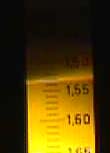 Refractice Index
Refractice Index
This material is single refractive just like normal glass and has a refractive index of 1.532 as shown at left on YourGemologist Refractometer. This is well within the range of normal glass readings and will make identification of the material quite easy. But wait......it gets better......
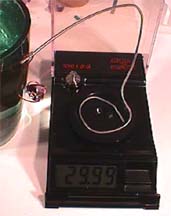
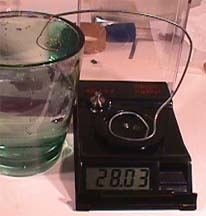 Specific
Gravity
Specific
Gravity
The zandrite actually weighs 5.01 carats. Doing the math with the numbers shown above with the hydrostatic specific gravity attachment that we developed here on YourGemologist.com earlier...the SG of zandrite turns out to be 1.64, which is also about mid-range for the specific gravity of glass according to the GIA "A" chart for gem properties. But next is where is really gets interesting.....
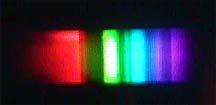 Spectroscope Analysis
Spectroscope Analysis
What a fun spectrum this material gives. This is better than rhodolite garnet. The spectrum you see above was taken through the hand-held diffraction grating spectroscope from YourGemologist.com and it shows graphic detail of a huge variety of absorption lines and bands. This would be a great specimen to teach to beginning gemology students for the use of the spectroscope. It is one of the most wide-spread absorption spectra that I have ever seen. And this certainly makes this material easy to identify with nothing more than a spectroscope, once you have seen it. And finally....

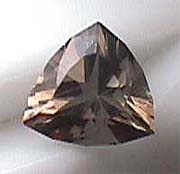 Color
Change
Color
Change
No way to mistake this material for anything other than what it is. The color change is remarkable and does not emulate any natural color change gemstone that I am aware of. Notice the red color in the incadescent light and the greyish green color in fluorescent light. These make this material a fairly interesting item for cheaper jewelry items. Although the color change synthetic corundum is much closer to looking like an alexandrite than zandrite, this zandrite is still an interesting gem material. And it is no wonder that the TV shopping channels picked up on it. It gives a lot of the flash for the cash and is something new with a fairly exciting name to hawk on those late night cable channels.
